NGC Ancients: Which Emperor Is It... Antoninus Pius, I Presume?
Posted on 8/15/2023
By
Ben Wallace
NGC Ancients Grader
Among the most plentiful and affordable of Roman coins are those of the young emperors Caracalla (A.D. 198 to 217) and Elagabalus (A.D. 218 to 222), both members of the Severan-Emesan dynasty that dominated Roman politics in the early 3rd Century A.D.
Since Caracalla and Elagabalus both used the name ‘Antoninus Pius,’ many of their coins can be difficult to tell apart. However, there are certain inscriptions, titles and design elements that make it possible to distinguish the two coinages.
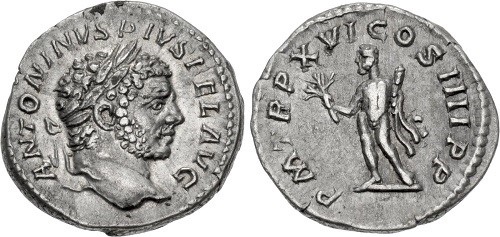 |
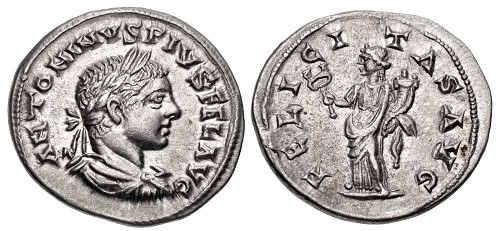 |
Caracalla and Elagabalus have just two shared obverse inscriptions: ANTONINVS PIVS FEL AVG and ANTONINVS PIVS FELIX AVG. However, this is not a problem for distinguishing their coins because the portrait styles are drastically different. Examples are shown above on two silver denarii.
The portrait of Caracalla has an older, bearded portrait, whereas that of Elagabalus is of a youthful, clean-shaven boy.
The name ‘Antoninus Pius’ is of some interest. Roman emperors sometimes adopted the names of predecessors, a practice still common today in some royal families. It was an easy way to shore up a new emperor’s legitimacy and tie him to the achievements of others. Such was the case with the emperor Antoninus Pius (A.D. 138 to 161).
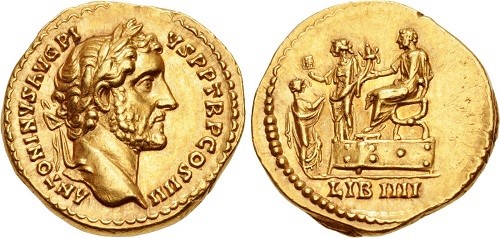 |
This gold aureus above was issued for Antoninus Pius. His coins are easy to distinguish from those of Caracalla and Elagabalus, which bear his name, because the portrait is radically different. The reverse of this coin has a platform scene showing Antoninus Pius seated next to Liberalitas, who gives coins to a citizen who holds the fold of his toga.
Now that we’ve gotten the easy part out of the way, let’s take a closer look at the coins of Caracalla and Elagabalus with an eye toward other clues useful in distinguishing their issues.
A good place to start is with a clear distinction: of these two young emperors, only one — Caracalla — held the subordinate title of ‘Caesar’ before he became emperor (‘Augustus’). This alone can help distinguish between the two in some cases.
Caracalla was Caesar from A.D. 195 to 198. If a coin has a portrait of a boy, and an inscription identifying him as ‘Caesar’ (often CAES), such as on the aureus below, it is an early coin of Caracalla.
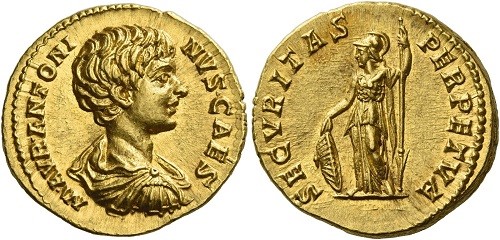 |
The above aureus was issued for Caracalla by his father, the emperor Septimius Severus (A.D 193 to 211). The obverse inscription reads M AVR ANTONINVS CAES, marking him as Caesar and heir to the throne. The reverse shows the personification Securitas holding a spear and shield.
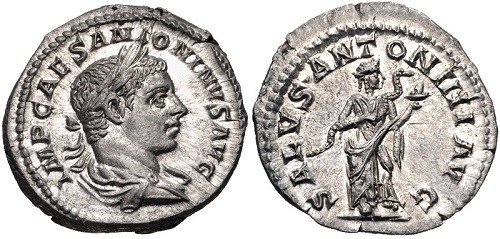 |
All obverse coin inscriptions for Elagabalus begin with the word IMP (for ‘Imperator’) and the name ANTONINVS is always fully spelled out. The silver denarius of Elagabalus above has the inscription IMP CAES ANTONINVS AVG. This can lead to confusion because only Caracalla held the title of Caesar, yet this is a coin of Elagabalus! The trick is this: even though the word CAES is in this inscription, the abbreviated titles IMP and AVG bookend the inscription, marking him as Augustus, not Caesar.
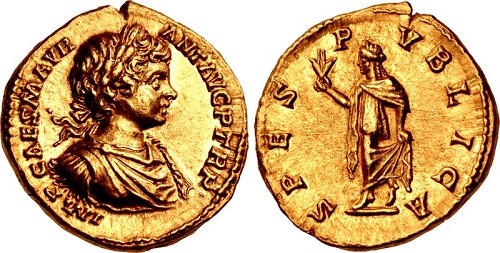 |
In comparison, the coin inscriptions of Caracalla rarely begin with the word IMP. However, whenever the inscription does begin with IMP, the name Antoninus or the title Caesar are abbreviated. This obverse inscription on the gold aureus above gives us an example: IMP CAES M AVR ANT AVG P TRP.
Just for the record, Caesar can be abbreviated as CAE or C.
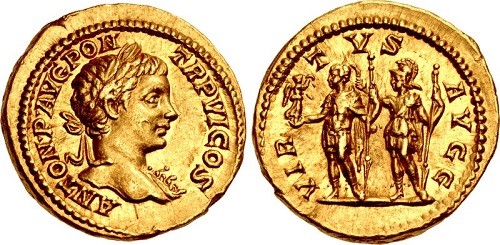 |
Due to the longer reign of Caracalla, he gained more titles and had more renewals of his tribunician powers, which are marked as TR P on coins. Elagabalus only had 5 (V) years of renewal compared to Caracalla’s 20 (XX) years. If an inscription has a number larger than 5 for the tribunician power, it must be a coin of Caracalla.
This can be seen on the aureus above. The obverse inscription ANTON P AVG PON TRP VI COS indicates that this coin was issued during the emperor’s sixth tribunician, assuring it is a coin of Caracalla. We also see the name Antoninus is abbreviated, further indicating this is Caracalla. The reverse shows the goddess Virtus crowning the emperor, who holds Victory.
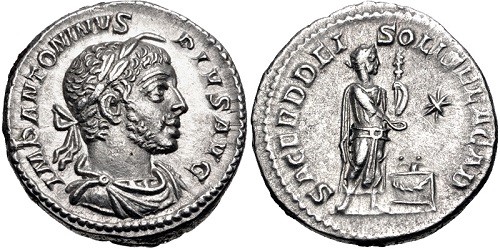 |
The denarius above shows the emperor Elagabalus with a short beard. On top of his head, we see a small "horn." This is believed to have been a bull penis, which was an object of significance to the Emesan religion, of which Elagabalus had been the chief priest before he became emperor. Elagabalus is the only ruler to be adorned with this on his coins, making it an easy identifier. The reverse shows him sacrificing at an altar beneath a star.
 |
Also tying in with the exotic religion practiced by Elagabalus and his family is this scarce and historical silver denarius from the Antioch mint. The reverse is of great religious significance, for it shows the stone of Emesa carried in a quadriga.
Now it’s your turn! Our final two coins are a test. Which emperor is it? Using the rules and points we’ve discussed above, see if you can figure it out.
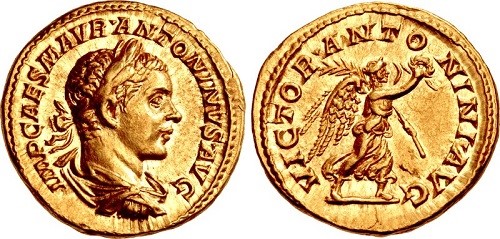 |
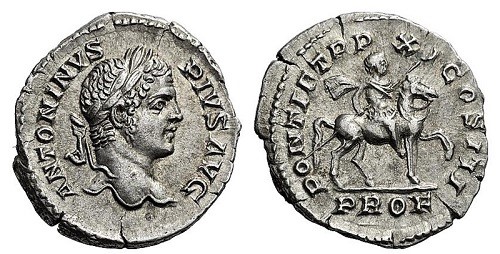 |
All images courtesy of Classical Numismatic Group.
Interested in reading more articles on Ancient coins? Click here.
Stay Informed
Want news like this delivered to your inbox once a month? Subscribe to the free NGC eNewsletter today!
